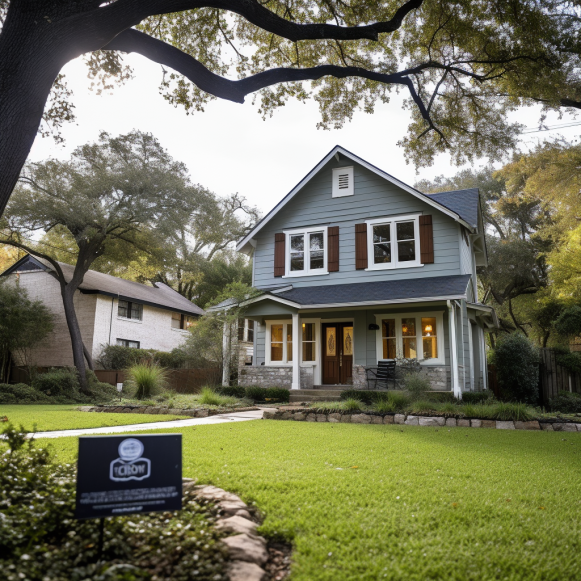Will mortgage rates go down? Experts weigh in

According to Bankrate’s weekly national survey of large lenders, the average rate on 30-year fixed mortgages remained at generational highs this week, rising to 8.01% from 7.99% the previous week.
According to Bankrate research, the average rate on 30-year home loans has reached its highest level since August 2000. That was before the September 11 terrorist attacks prompted the Federal Reserve to lower interest rates, and before the Great Recession prompted the Fed to keep rates low throughout the 2010s.
The current rise in mortgage rates is due to a number of factors, including the United States’ resilient economy, the Federal Reserve’s ongoing war on inflation, and, most recently, a sharp rise in 10-year Treasury yields, which serve as an informal benchmark for 30-year mortgage rates. The 8% ceiling is just another unwelcome milestone in the rising trend of borrowing costs.
“We’ve seen a tremendous run-up in rates,” says Tom Wind, U.S. Bank’s head of Consumer Lending. “It’s kind of a shock.”
How did mortgage rates fare this week?
In this week’s survey, 30-year fixed mortgages had an average total of 0.33 discount and origination points.
The benchmark 30-year fixed-rate mortgage has averaged 6.89% over the last 52 weeks. The 30-year fixed-rate mortgage was 7.12% a year ago. That rate was 7.55% four weeks ago. This week’s 30-year fixed-rate average is 1.74 percentage point higher than the 52-week low of 6.27%.
In terms of other loans:
—The 15-year fixed-rate mortgage was 7.23%, up from 7.19 percent the previous week.
—The 5/6 adjustable-rate mortgage (ARM) rate was 7.38%, down from 7.39% the previous week.
—The 30-year fixed-rate jumbo mortgage rate was 7.72%, unchanged from the previous week.
The impact of mortgage rates on home affordability
According to the U.S. Department of Housing and Urban Development, the national median family income for 2023 is $96,300, and the median price of an existing home sold in September 2023 was $394,300, according to the National Association of Realtors. Based on a 20% down payment and a 7.99% mortgage rate, the monthly payment of $2,317 is 29% of the average family’s monthly income.
The sharp rise in mortgage rates has reduced affordability and slowed home sales. This market is especially difficult for first-time buyers. Home prices have not fallen significantly, and values are unlikely to fall given the scarcity of available homes.
“Higher mortgage rates have a dual impact on the housing market: they reduce affordability for buyers while strengthening rate lock-in for sellers,” says Odeta Kushi, First American’s deputy chief economist. “The combination of reduced affordability and increased strength of the rate lock-in effect is likely to continue to suppress home sales because you can’t buy what’s not for sale, even if you can afford it.”
Will mortgage rates fall?
The sharp rise in interest rates has taken the housing industry by surprise. The Mortgage Bankers Association predicts that the 30-year fixed rate will fall to 7.2% by the end of the year, nearly a full percentage point lower than its previous forecast.
“While Fed officials have indicated that additional rate hikes may not be required, rate cuts may not come as soon or as rapidly as previously expected,” Mike Fratantoni, chief economist at the Mortgage Bankers Association, said last week at the group’s annual conference.
Mortgage rates were expected to fall by the end of 2023, according to economists, but the strength of the US economy has thrown a kink in those predictions. The rise in 10-year Treasury yields has followed suit.
Many in the industry anticipate that rates will peak at 8%. “I believe they will reach 8% and then fall back,” says Vishal Garg, CEO of lender Better.com.
Mortgage rates are also linked to inflation, which the Fed is attempting to control. The central bank decided to keep interest rates unchanged at its September meeting. While the Fed does not directly set fixed mortgage rates, it does set the tone of the interest-rate environment — and as the Fed’s policy rate has risen from zero in early 2022 to a range of 5.25% to 5.5% now, mortgage rates have followed suit.
Procedure
Weekly, Bankrate.com conducts a national survey of large lenders. Bankrate collects rate information from the ten largest banks and thrifts in ten major U.S. markets to conduct the National Average survey. Our Market Analysis team collects rates and/or yields on banking deposits, loans, and mortgages for the Bankrate.com national survey. We’ve been conducting this survey in the same way for more than 30 years, and because it’s always been done the same way, it provides an accurate national apples-to-apples comparison. Our rates differ from those of other national surveys, particularly the weekly published rates of Freddie Mac. Every week, Freddie Mac surveys lenders to determine the rates and points for first-lien prime conventional conforming home purchase mortgages with an 80% loan-to-value. “Lenders surveyed each week are a mix of lender types — thrifts, credit unions, commercial banks and mortgage lending companies — is roughly proportional to the level of mortgage business that each type commands nationwide,” Freddie Mac said in a press release.






